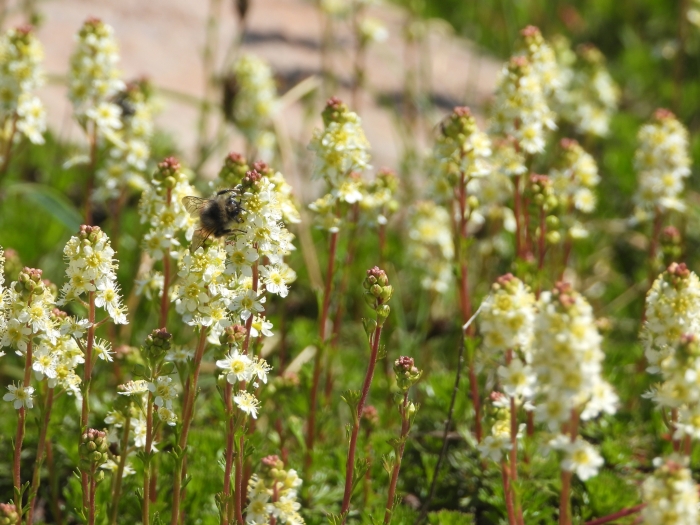Partridgefoot
(Luetkea pectinata)
Partridgefoot (Luetkea pectinata)
/
/

Jared Shorma
CC BY 4.0
Image By:
Jared Shorma
Recorded By:
Copyright:
CC BY 4.0
Copyright Notice:
Photo by: Jared Shorma | License Type: CC BY 4.0 | License URL: http://creativecommons.org/licenses/by/4.0/ | Rights Holder: Jared Shorma | Publisher: iNaturalist | Date Created: 2021-08-28T14:53:46-07:00 |






















































Estimated Native Range
Summary
Luetkea pectinata, commonly known as Partridgefoot, is an evergreen mat-forming perennial herb native to subalpine and alpine zones, as well as moist coniferous forests in the Northwestern United States and Western Canada. It typically forms dense mats with a height of 10 to 150 mm, making it a low-growing ground cover. The leaves of Partridgefoot are pinnately divided, 7 to 20 mm long, with the final segments being linear or lanceolate. During the flowering season, which occurs in mid to late summer, it produces a dense, erect terminal cluster of small, white to pinkish flowers that are modest in appearance but can add a delicate texture to garden settings.
Partridgefoot is valued for its ability to form evergreen mats, providing year-round ground cover and interest in rock gardens, alpine gardens, and shaded woodland settings. It is relatively low-maintenance, requiring minimal water once established and thriving in well-drained soils with organic content. It prefers part shade but can tolerate full sun in cooler climates. While it is not commonly afflicted by diseases, it can be sensitive to overly wet conditions which may lead to root rot. Partridgefoot is not known for aggressive roots or invasiveness, making it a safe choice for small garden spaces.CC BY-SA 4.0
Partridgefoot is valued for its ability to form evergreen mats, providing year-round ground cover and interest in rock gardens, alpine gardens, and shaded woodland settings. It is relatively low-maintenance, requiring minimal water once established and thriving in well-drained soils with organic content. It prefers part shade but can tolerate full sun in cooler climates. While it is not commonly afflicted by diseases, it can be sensitive to overly wet conditions which may lead to root rot. Partridgefoot is not known for aggressive roots or invasiveness, making it a safe choice for small garden spaces.CC BY-SA 4.0
Plant Description
- Plant Type: Herb
- Height: 0.3-1 feet
- Width: 0.3-1 feet
- Growth Rate: Moderate
- Flower Color: Yellow, Cream
- Flowering Season: Summer
- Leaf Retention: Evergreen
Growth Requirements
- Sun: Part Shade
- Water: Medium, High
- Drainage: Fast
Common Uses
Butterfly Garden, Low Maintenance, Rock Garden, Showy Flowers
Natural Habitat
Subalpine and alpine zones, as well as moist coniferous forests in the Northwestern United States and Western Canada
Other Names
Common Names: Partridge Foot, Rapphönsfot
Scientific Names: , Luetkea pectinata, Eriogynia pectinata, Spiraea pectinata, Saxifraga pectinata, Leutkea pectinata, Luetkea caespitosa-elatior, Luetkea sibbaldioides, Spiraea elatior, Spiraea multifida
GBIF Accepted Name: Luetkea pectinata (Pursh) Kuntze